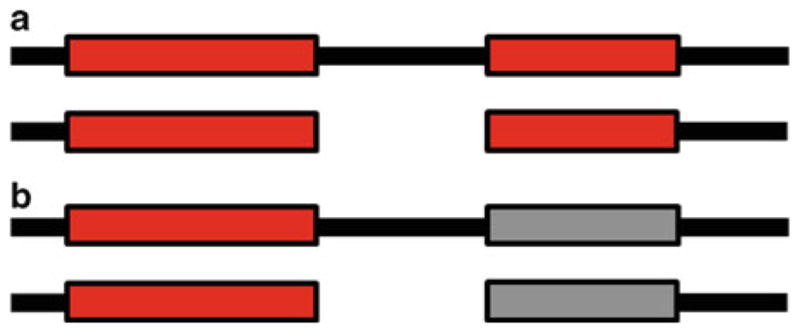Fig. 2.

Two types of alignment, global and local. (a) shows a global alignment of two sequences (black lines). Global alignment is an alignment along the complete length of the sequences, so it bridges a gap in the second sequence (white space), to include all pairs of similar subsequences (red rectangles). (b) shows a local alignment of the same two sequences. Local alignment aligns only the pair of most similar subsequences in the sequences, so it does not bridge the gap in the second sequence and does not include the smaller subsequence alignment (now shown in gray). Local alignment can be misleading when identifying species with barcodes because it does not incorporate all available sequence information.
